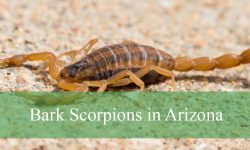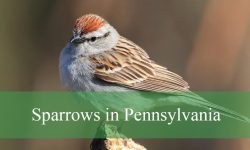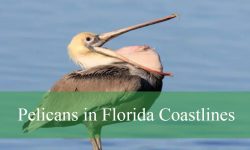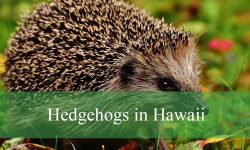In Florida, the Northern Mockingbird holds a special place as the state bird, and it is one of the most familiar species across suburban lawns, city parks, and natural woodlands. However, Florida’s unique geography, located close to the Caribbean, makes it a hotspot for rare visitors as well. Occasionally, birdwatchers and ornithologists spot the Bahama Mockingbird and the Tropical Mockingbird, both of which add excitement to the birding experience in the state.
Understanding the different types of mockingbirds in Florida not only enriches birdwatching but also helps in appreciating the subtle differences in their appearance, calls, and behavior. Each species has its own unique charm, habitat preference, and ecological role.
In this article, we will explore the three types of mockingbirds that can be seen in Florida, focusing on their identification, size, behavior, feeding habits, and distribution across the state.
Northern Mockingbird in Florida

Characteristics and Identification
The Northern Mockingbird (Mimus polyglottos) is the most widespread and familiar mockingbird species in Florida, found year-round in almost every county. This medium-sized bird measures about 8 to 11 inches in length, with a wingspan of 12 to 15 inches. Its plumage is primarily gray on the upperparts and whitish below, with striking white wing patches that flash brightly in flight. The long tail is dark with white outer feathers, which also become noticeable when the bird takes off.
One of the most remarkable identification features of the Northern Mockingbird is its behavior. It often perches on open branches, fences, or utility wires, making it easy to observe. When agitated, it performs a distinct wing-flashing display, raising and lowering its wings to expose the white patches. This species is also famous for its complex vocalizations. A single bird may learn and repeat dozens of sounds, from the calls of other birds to car alarms, producing a continuous series of varied notes.
Size, Behavior, and Feeding
In terms of size, Northern Mockingbirds weigh between 1.4 and 2 ounces, with slender bodies that make them agile fliers. They are highly territorial, especially during the breeding season, and will fiercely chase away intruders ranging from other birds to cats, dogs, and even humans. Their bold personality makes them one of the few songbirds unafraid of larger threats.
Northern Mockingbirds are omnivorous. Their diet consists mainly of insects such as beetles, grasshoppers, ants, and caterpillars during spring and summer, shifting to berries, fruits, and seeds in the cooler months. They play an important ecological role by dispersing seeds and controlling insect populations. In Florida, they are often seen feeding on native plants like holly, beautyberry, and mulberry, but they will also visit backyard feeders for fruit and suet.
Habitat and Distribution in Florida
The adaptability of Northern Mockingbirds is one of the reasons for their widespread presence in Florida. They thrive in open areas with scattered shrubs, hedgerows, suburban gardens, parks, and forest edges. Unlike some songbirds that avoid human-dominated landscapes, Northern Mockingbirds are comfortable nesting in residential areas, where they build cup-shaped nests in shrubs, trees, or even ornamental plants.
Throughout Florida, from the Panhandle to the Keys, Northern Mockingbirds are a common sight. Their year-round presence and constant singing make them one of the most recognizable birds in the state. For many Floridians, the lively songs of the Northern Mockingbird are a daily soundtrack, especially during spring when males sing late into the night to defend territories and attract mates.
Bahama Mockingbird in Florida

Characteristics and Identification
The Bahama Mockingbird (Mimus gundlachii) is a rare but fascinating visitor to Florida, primarily seen in the southernmost parts of the state. This species resembles the Northern Mockingbird but has subtle differences that help birders distinguish between the two. Measuring about 9 to 10 inches in length, it has a slightly stockier build and tends to appear darker overall, with less contrast between the wings and body. Its tail is longer and often shows less prominent white markings than that of its northern relative.
Another key feature is its song. While the Bahama Mockingbird is also a mimic, it has a harsher, less musical tone compared to the Northern Mockingbird. The notes are repetitive and less varied, making it an important clue for birdwatchers listening in the field. Observing their behavior, Bahama Mockingbirds are often more secretive and less likely to perch prominently in open spaces, preferring denser vegetation.
Size, Behavior, and Feeding
Bahama Mockingbirds weigh around 2 ounces, and though similar in size to the Northern Mockingbird, they are slightly bulkier with broader wings. They display strong territorial behavior but are generally quieter and less conspicuous than their northern counterparts. When disturbed, they often retreat into cover rather than aggressively confronting intruders.
Their diet mirrors that of other mockingbirds, consisting of insects, spiders, small invertebrates, and seasonal fruits. In the Bahama Islands and southern Florida, they are known to feed on native berries and occasionally forage on the ground for insects. Their feeding habits contribute to maintaining a balanced ecosystem by reducing insect populations and dispersing seeds.
Habitat and Distribution in Florida
In Florida, Bahama Mockingbirds are considered rare, but they occasionally appear in the Florida Keys and southern coastal regions. Their primary range includes the Bahamas, Cuba, and the Turks and Caicos Islands, but storms, strong winds, or migratory wanderings can bring them north into Florida. Birdwatchers in Monroe County and the Keys have the best chance of spotting one, often during spring or early summer.
Due to their rarity, Bahama Mockingbirds are highly prized sightings among bird enthusiasts in Florida. They prefer scrubby habitats, coastal thickets, and areas with dense vegetation where they can remain partly hidden. Their presence, though uncommon, highlights Florida’s role as a crossroads for Caribbean bird species.
Tropical Mockingbird in Florida
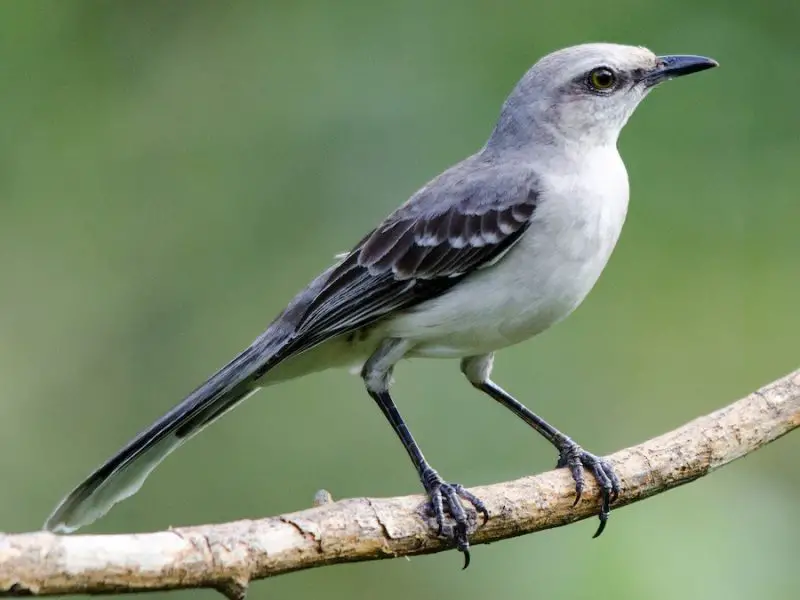
Characteristics and Identification
The Tropical Mockingbird (Mimus gilvus) is another rare species occasionally recorded in Florida, though sightings are extremely limited and often restricted to the southernmost regions. This species closely resembles the Northern Mockingbird but can be distinguished by its longer tail, slimmer body, and slightly paler plumage. Its underparts are lighter, and the white wing patches are less defined than in its northern cousin.
Tropical Mockingbirds are excellent mimics, but unlike the Northern Mockingbird, their repertoire is not as broad. Their songs are more repetitive and less musical, often consisting of short phrases repeated several times before switching to another pattern. This characteristic helps birdwatchers identify them by ear, especially in areas where their range overlaps with other mockingbird species.
Size, Behavior, and Feeding
Measuring around 10 to 11 inches in length, the Tropical Mockingbird is similar in size to the Northern species but appears leaner and longer-winged. Their behavior is also slightly different, as they are more social and less territorial compared to the Northern Mockingbird. They may be observed foraging in loose groups, a behavior uncommon among mockingbirds in North America.
Their diet consists largely of insects, fruits, and seeds, similar to other mockingbirds. In Florida, when they appear, they often take advantage of fruiting plants and berry-producing shrubs. Their opportunistic feeding habits allow them to adapt quickly to new environments, although their presence in Florida is usually temporary and tied to unusual weather patterns or dispersal events.
Habitat and Distribution in Florida
The Tropical Mockingbird’s core range includes Central America, South America, and parts of the Caribbean. In Florida, their occurrence is rare and localized, with the Florida Keys being the most likely place to spot one. Birders occasionally report sightings after hurricanes or strong tropical storms, when individuals may be displaced from their usual habitats.
These birds prefer open areas with scattered shrubs, coastal scrub, and lightly wooded regions. In Florida, they are sometimes observed in similar habitats as the Northern Mockingbird but do not establish permanent populations. Instead, they remain rare vagrants, making any sighting a noteworthy event in the birding community.
Conclusion
Florida’s position as a gateway between North America and the Caribbean makes it a unique state for birdwatching, and mockingbirds are an excellent example of this diversity. The Northern Mockingbird dominates the landscape as the state bird and a year-round resident, charming Floridians with its endless song and fearless personality. The Bahama Mockingbird, though rare, occasionally graces the Florida Keys with its presence, offering birders a chance to spot a species more commonly associated with the islands of the Caribbean. Meanwhile, the Tropical Mockingbird remains an even rarer visitor, appearing only under unusual circumstances but adding to the state’s rich ornithological record.
Together, these three types of mockingbirds highlight the variety and unpredictability of Florida’s birdlife. Whether you are a casual backyard observer or a dedicated birder traveling to the Keys, keeping an eye and ear out for these remarkable mimics can make your Florida birding experience unforgettable.
FAQs about Mockingbirds in Florida
Are Northern Mockingbirds common in Florida?
Yes, Northern Mockingbirds are extremely common across Florida and are present year-round. They thrive in suburban areas, parks, gardens, and natural habitats, making them one of the most easily recognized songbirds in the state.
Can you see Bahama Mockingbirds in Florida?
Bahama Mockingbirds are rare visitors in Florida, mainly restricted to the Florida Keys and southern coastal areas. While not common, they sometimes appear after storms or during migration wanderings, offering birdwatchers a special chance to spot them.
Do Tropical Mockingbirds live in Florida permanently?
No, Tropical Mockingbirds do not establish permanent populations in Florida. They are rare vagrants that occasionally reach the Florida Keys, usually after being displaced by storms from the Caribbean or Central America.
How can you tell the difference between Northern and Bahama Mockingbirds?
Northern Mockingbirds have prominent white wing patches and a more musical, varied song. Bahama Mockingbirds appear slightly darker, with less distinct white markings and a harsher, more repetitive song. Listening carefully is often the best way to tell them apart.
What do mockingbirds in Florida eat?
Mockingbirds in Florida feed on a varied diet of insects, spiders, fruits, and berries. Northern Mockingbirds, in particular, are known to eat beetles, grasshoppers, and caterpillars in summer, shifting to berries and seeds in the cooler months.
Why is the Northern Mockingbird the state bird of Florida?
The Northern Mockingbird was chosen as Florida’s state bird in 1927 because of its beauty, strong presence across the state, and extraordinary singing ability. Its adaptability and bold behavior made it an ideal symbol of Florida’s diverse wildlife.

